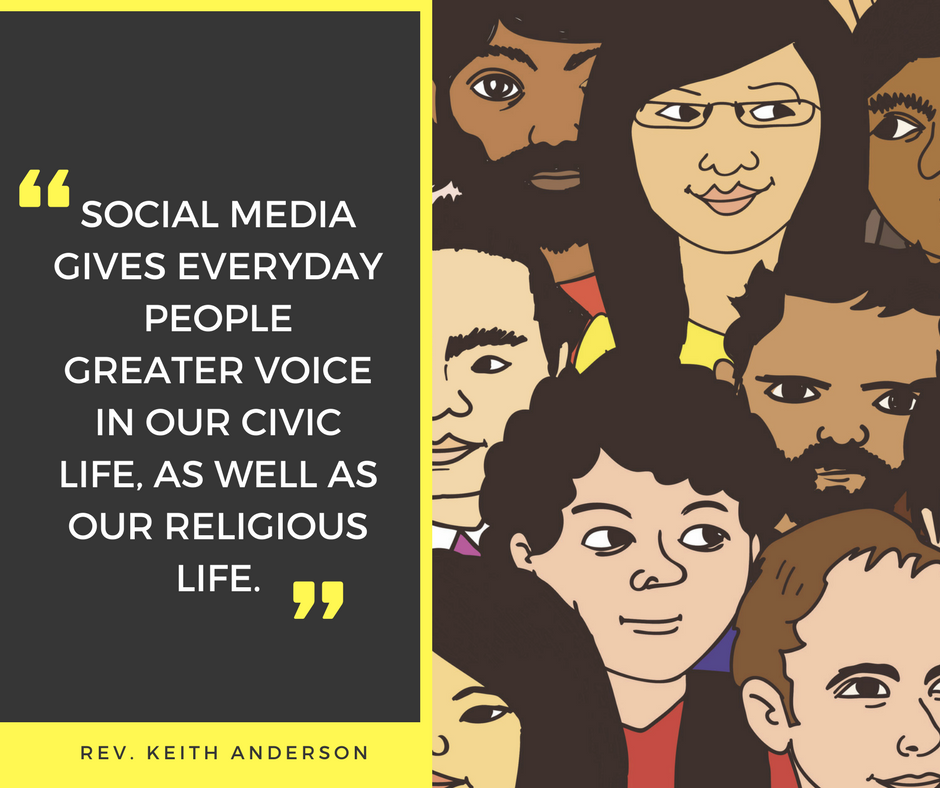In the season of Epiphany, we hear again the stories of Jesus calling his first disciples and how Jesus formed this motley, rag-tag group into the leaders of the early Christian movement. These stories remind us that each of us is called to follow God and love of neighbour, using our own unique set of gifts, talents, and experiences. The disciples show us that we don’t need to be perfect to follow Jesus; we just need an open and willing heart.
Perhaps not since the days of the early church have lay people had more of a voice in the church—never had more opportunities to share the love of God in Christ Jesus—than today. This is due in no small measure, you guessed it, to social media. As Lee Rainie and Barry Wellman write in their book, Networked: The New Social Operating System, thanks to social media:
“Each person has become a communication and information switchboard connecting persons, networks, and institutions. At the same time, each person has become a portal to the rest of the world, providing bridges for their friends to other social circles.”
In the early 21st century the “priesthood of all believers”—the conviction that we are each ministers in daily life, whether or not we are ordained, has morphed into the “tweephood of all believers.”1 This is where people are living and sharing their faith every day through these emerging digital technologies.
Think about it.
Your personal digital network is probably larger than your church’s and maybe even your pastor. You are already connected to many people that don’t have a home congregation or religious affiliation. Most individual believers have as much or more influence than the congregation to which they belong, or the minister that serves it.
In fact, you are likely doing it already, anytime you extend comfort, rejoice at a milestone and share moments in your life that are meaningful to you. By also responding to the people, places, and experiences that are meaningful to others, you, as St. Paul wrote to the Romans “rejoice with those who rejoice, and weep with those who weep” (Romans 12:15). Every day, probably several times a day, you have the opportunity to gather, comfort, rejoice, and pray for others. This is holy work, and it doesn’t require a collar, a theological degree, or a church office. All you need is a digital device and an internet connection.
We have also seen in recent years the ways in which digital technologies have helped to amplify the voices of those whose voices have been historically marginalized. In the United States, the #metoo movement about sexual harassment has lifted the voices of women and the reality of their experience. The #blacklivesmatter movement, which began as a social media phenomenon, has amplified the voices of the African-American community in the U.S.
Social media gives everyday people greater voice in our civic life, as well as our religious life.
Perhaps you are wondering how to take this ministry of presence further. This year my church is experimenting by creating a podcast called, We Make the Road by Walking inspired by Brian McLaren’s great book of the same name. For each of the short 52+ chapters, a different parishioner will join me for a short conversation responding to what spoke to them in that. We’ve recorded a few conversations thus far, and it’s a reminder of how rich our people and congregations are with insights into faith.
The whole endeavour feels like a community art project, where we gather up and amplify many different voices.
Could your congregation do this kind of project, whether digital or analog, that raises up voices and engages your faith community and extended network in conversations about where faith connects in everyday life? How might you amplify the voices of people in your parish or those whose voices have been missing or marginalized?
In my own ministry context, all trends point to a future with fewer full-time clergy and clergy serving multiple faith communities. In the coming years the professionalization of ministry that marked the 20th century will give way to a future and a church that will hinge on the leadership and priesthood of all believers. In the meantime, digital social media can help us live into that new religious landscape, amplify lay voices, and experiment with these new networked and relational ways of being church.
1 A “tweep” is for someone who is on Twitter.
Rev. Keith Anderson














